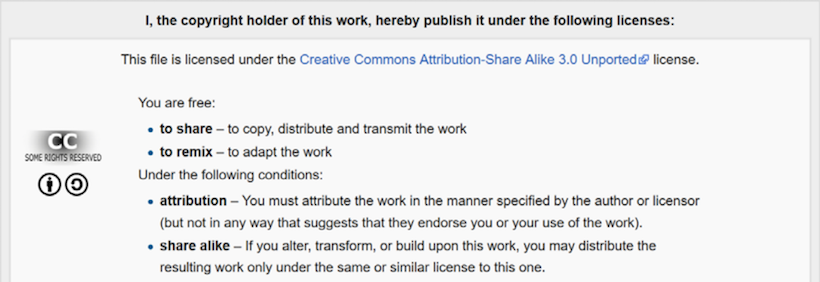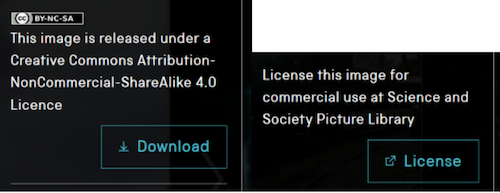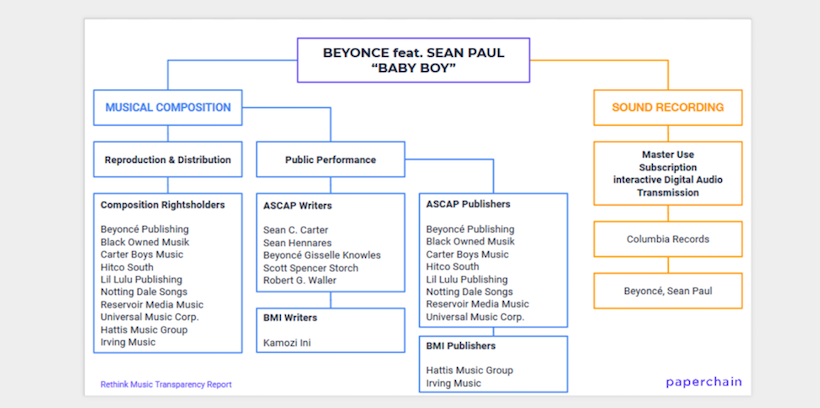Why is the issue of copyright important in website creation?
When building websites, copyright only becomes a matter of concern when you include work created by other people in the website you are developing. In other words, if all the content used at the website was created by you – if all the text, images, or any other media (for example music or video) are the end-products of your own labor – then there is no problem! The copyright to the material likely belongs to you (or possibly JMU, if you created the media as part of your paid employment at the university).
However, it is somewhat impractical to expect to build a website entirely from scratch (including all of its content). Let us imagine that a JMU history professor wishes to build a website documenting a class research assignment examining the history of railway transportation in the United Kingdom. When seeking images for the site, one possibility would be to fly to England and photograph museum exhibits of steam locomotives; or another approach would be to see if those images already exist and are hosted online. In the latter (more practical) scenario, the professor will have to ascertain that the photographs can be lawfully reproduced on the created website. In other words, the professor must be careful not to breach the rights of the copyright holder of the original photographs.
Distinguishing the "open web" from Canvas, in terms of copyright, licensing, and fair use
It is important to mention at the outset that this factsheet is only designed to address the use of material that will appear "openly" online, hosted by JMU for anyone in the world to see. As such, it applies to websites created using Cascade and would also apply to publicly accessible material distributed using other platforms (such as a WordPress blog). The information in this factsheet does not relate to the hosting of other people's copyrighted material in Canvas for the specific purpose of delivering instruction. Canvas, protected as it is by a JMU e-ID login, enjoys many additional copyright benefits that do not apply to publicly available websites - notably the TEACH Act and specific issues of licensing. These matters are discussed practically, and in some detail, at the Copyright & Teaching section of the JMU Libraries' Copyright Guide.
What types of copyrighted material can be problematic when building publicly accessible websites?
The following media are the most typical candidates for reproduction on a website: Images, text, music, video. Each of these will be dealt with in turn. There is an additional "other" category, included in this guide, which briefly references other problematic areas, such as trademarks.
Images probably represent the best example of someone else's created work being used for the purposes of website development. It is typical for a web developer to want to use images to augment a website, and, as discussed above, it is often impractical to take all of those photographs, personally. The good news is that images are the easiest type of media to find and verify, in terms of lawful reuse. For more information about the reproduction of images openly on the web, please see: Using Images & Media at the JMU Libraries' Copyright Guide. Images will fall into the following categories, in terms of copyright and permitted fair use:
- Copyrighted (protected)
- Copyrighted (use allowed with licensing)
- Public Domain
Copyrighted images (protected): the first category of images – images where the copyright holder has specifically protected their copyright, or has given no indication as to the copyright status of the work, must not be used. This isn't true of "orphaned works" (where no copyright owner can be reasonably identified).
Copyrighted images (use allowed with licensing): in many ways, this represents the easiest class of images to use. As a matter of good practice, simply check the Creative Commons licensed status of an image before using it at the website you are developing. In keeping with our example about the history professor (above), here is an image of the British steam locomotive "Mallard" (for railroad fans, still the holder of the world speed record for a steam locomotive). Here is an image of the locomotive from Wikimedia Commons (an excellent resource for finding Creative Commons licensed images)

Source: https://commons.wikimedia.org/wiki/File:Number_4468_Mallard_in_York.jpg
And here is the Creative Commons license attached to the image:

Here is an image of the locomotive hosted by its owners, the National Railway Museum in York, United Kingdom:

…and the attached license (note the additional restriction – a need for a license if the image is to be used commercially). Note, not all "non-profits" like the National Railway Museum allow non-commercial duplication of their images; sometimes, even educational institutions like universities have to get permission to re-use such images for non-commercial purposes, which is why it’s always necessary to check!

Using Images & Media at the JMU Libraries' Copyright Guide provides additional information about how to find Creative Commons licensed images, including instructions for configuring Google Images to locate such images.
Public Domain images: An image can be released into the public domain by its owner/copyright holder at any time. Public Domain images can also be found through resources such as Wikimedia Commons. Additionally, older images that were published before 1923 or were created more than 70 years before the death of their creator can usually be regarded as Public Domain images.
It is certainly possible for textual materials to be distributed under a Creative Commons license, and this is quite commonplace for material distributed in an online format (a good example would be Open Access scholarly articles).
For print materials, however, it is less common. If seeking to reproduce non-Creative Commons licensed copyrighted text at a website, then the Doctrine of Fair Use is the only mechanism that may allow such use. If relying upon the Doctrine of Fair Use to reproduce text at a JMU hosted website, you are encouraged to review Fair Use in Teaching and Fair Use in Scholarship at the JMU Libraries' Copyright Guide.
For general guidance though: the purpose of the use is of great importance – is it for teaching or scholarship? In the case of scholarship, is it "transformative" - has the source material been used in new, innovative, or unexpected ways to advance scholarship? If you determine that your use of the textual material meets this test of fair use, please remember to use as little of the original source material as possible, in order to meet your purpose. Fair use does not favor highly creative work (for example poems or plays). It tends to favor analytical writing.
As a rule of thumb: while including a short quote in your website’s text will probably be perfectly OK, cutting and pasting large chunks of text, or scanning and uploading large amounts of material, is most likely not OK!
It is tempting to host music at a website, if only because it’s fun, or for some other creative reason. But in short, please do not get hold of a copy of Lady Gaga’s latest hit record and stream it at a JMU hosted website. This goes for all contemporary popular music, and many, many other sources of music, too – irrespective of the music’s genre. Music copyright is something of a minefield, as the graphic below demonstrates:

Graphic reproduced with permission of paperchain
…and music copyright holders are highly adept at sniffing out where their material is being hosted unlawfully, and tend to be extremely litigious.
Where to find music that can be used without problems?
The best place to look is the Free Media for Creative Use guide hosted by JMU Libraries. In using this resource, please note the differences between Creative Commons / Public Domain media and JMU licensed media. It is often the case that JMU licensed media may only be used in Canvas, or is otherwise restricted to access by the JMU community only.
Running the risk of repetition, here - please do not get hold of a copy of Lady Gaga’s latest hit video and stream it at a JMU hosted website… …and, of course, the same goes for many other types of video, too. Within Canvas, the TEACH Act makes a specific provision for screening documentaries, and, to a limited extent, other types of films, too. However, such luxuries do not extend to publicly available websites of the sort you may be creating through Cascade. Again, a good place to look is the Free Media for Creative Use guide hosted by JMU Libraries – again with the caveat that JMU licensed media may only be used in Canvas, or is otherwise restricted to access by the JMU community, only.
Linking to / embedding externally hosted video: Linking to, or embedding, externally hosted media (such as a YouTube video) can be an excellent way to circumvent the problems associated with hosting streaming media. The only word of warning here is that due diligence involves assessing whether the video has been lawfully uploaded. YouTube does a good job of taking down material that breaches a copyright holder’s rights, but it is not infallible. As an example, due diligence on your part may involve linking to (or embedding) material uploaded to the official PBS YouTube channel, as opposed to a PBS program uploaded by an unidentifiable YouTube user with nebulous statements about fair use included in the video’s description.
There are, of course, other questions pertaining to the use of copyrighted materials in web development. Here are answers to a couple of frequently asked questions:
Government documents: for the most part, government documents circulated under the auspices of the U.S. Government Publishing Office are free to be re-used without any copyright issues arising.
Trademarks: please be very, very cautious when using other people’s trademarks at your website. Fair use pertaining to trademarks is very limited, mostly to what are called "nominative fair use," and "descriptive fair use." Frankly, unless there are compelling reasons for exploring the question further, re-use of trademarks represents waters where university web developers are best advised not to venture. Trademarks do not enter the public domain over time. It is possible (although by no means certain) that "Steamboat Willie" may enter the public domain a few years from now, but its star, Mickey Mouse, will remain a trademark of Disney. As one online copyright commentator puts it: "The House of Mouse is very protective of their trademarks."
Why should I care about all of this stuff, anyway? What will happen if I choose to ignore this question of copyright?
Even in instances where you believe litigation to be highly unlikely, or the copyrighted status of a work seems unproblematic to you (for example, using a photograph taken by a friend at your website), it is still good practice to get that person’s permission to use the media before you upload it!
In terms of prima facie copyright violations, well…
When they are discovered (and they often are), the "least bad" thing that will happen is a takedown notice, typically sent by the outraged copyright holder’s attorney to JMU’s University Counsel. Beyond that, things can escalate rapidly, to take-down notices with demands for information about access/download statistics, and, potentially, claims for financial compensation for losses the injured party believes the copyright violation has caused. Such things are best avoided.
However, the basic message here is one of risk management, not risk aversion. Risk aversion would involve using no-one else’s media at all, and, as discussed at the start of this factsheet, such an approach is totally impractical. Risk management involves proper investigation of materials to ensure they are being lawfully used.
When questions rise, please contact the author of this factsheet, Howard S. Carrier at carriehs@jmu.edu or 540-568-5277.
This factsheet is distributed under a Creative Commons Attribution-Non Commercial-ShareAlike 4.0 International License: https://creativecommons.org/licenses/by-nc-sa/4.0/



